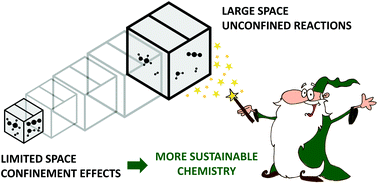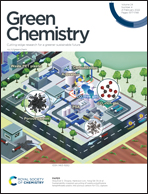Making more with less: confinement effects for more sustainable chemical transformations
Abstract
Chemical reactions require close physical contact between reactants, catalysts, and intermediates to proceed. In a bulk homogeneous solution, this is often governed by random collisions based on molecular diffusion. A powerful concept is the use of confinement to physically restrict the reacting species within the same physical space, increasing the likelihood of successful collisions. Controlling the identity and geometry of the co-located reactants also provides the opportunity to impart improved regio- and chemoselectivity for these processes. This effect has been explored in a number of contexts, including catalytic performance, yet its potential in providing greener processes has not been fully recognized. This review discusses different modes of confinement that have been explored for catalytic applications grouped as confinement within pores and cavities, confinement by encapsulation within hollow solids, and confinement within self-assembled systems. The theory behind changes in reaction outcomes due to confinement and selected examples of reactions where confinement has played an important role are discussed. We highlight the important implications of confinement effects towards the discovery of more sustainable processes as well as the relevance of these outcomes to the field of green chemistry. Key challenges and future directions within the field are highlighted.

- This article is part of the themed collections: Green Chemistry Reviews and 2022 Green Chemistry Hot Articles


 Please wait while we load your content...
Please wait while we load your content...